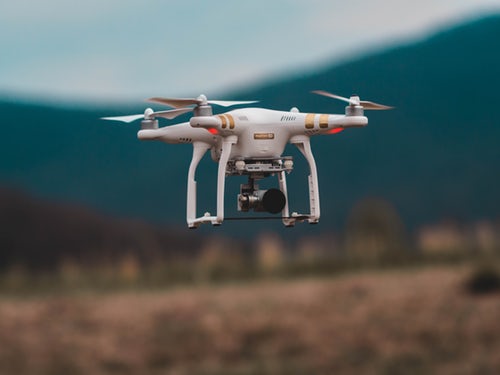
Everything You Need to Know About Owning a Drone
Drones are unmanned aerial vehicles (UAV’s) that can be flown remotely. This is made possible through sensors and GPS systems in conjunction with software-controlled flight plans embedded in their systems. They were initially designed for military use in circumstances where manned flights were risky or for surveillance and intelligence gathering. Things have however changed as drones have now become common leisure tools. As with many technological innovations, drones have an array of applications aside from leisure such as:
- Weather analysis
- Agricultural mapping
- Police surveillance
- Search and rescue operations
- Mineral prospecting
- Construction and real estate inspection
- Delivery of goods
Before you decide to go buy a drone, you should be aware that there are regulations governing the use of unmanned aerial systems.

Registration and regulation
In the US pilots are required to register with the Federal Aviation Administration (FAA) at the cost of $5 before flying outdoors. This registration lasts three years and allows you to fly as many drones as you like within that period. You should, however, label your aircraft with an identification number. Drones that weigh less than 250 grams or 8.8 ounces are not required to be registered.
Aside from registrations, the following are some rules you will need to follow if you are purchasing a drone for leisure purposes:
- The drone should always be flown within your line of sight.
- Fly below 400 feet.
- Never fly within five a mile radius to an airport.
- Never fly over groups of people, stadiums or sports events.
- Do not operate your UAV near emergency and rescue operations.
- The drone must only be operated in daylight.
- Do not fly under the influence.
Regulations for drones intended for commercial use
- The Pilot must be at least 16 years old.
- Air traffic control approval is required to fly near airports or any controlled airspace.
- You must get a remote pilot airman certificate with a small UAS rating.
- The drone must not exceed 55 lbs including the load.

What to consider when selecting a drone
Use
There are many types of drones available in the market. Even so, most are configured to perform specific functions that may vary from each other. You need to know if you intend to use it for surveillance, fun, or photography. If you love taking pictures of scenic views you are better off choosing one with an HD camera and photography specific functions.
Budget
Like any other item, shopping for a drone without a budget is not wise. Drones range from $10 to $2,000. To avoid any rush of blood and impulse buying, decide on how much you can spend on it beforehand.
Battery life
Battery life can range from five minutes to half an hour depending on the type of battery. Small devices use the standard LiPo battery packs that can only last up to 8 minutes. Bigger ones which last up to half an hour use mAh batteries. You might also consider drones with removable batteries so that you can buy replacements. This is a simple way of increasing the flying time for each session outdoors.
Insurance
Drone damage and liability insurance may be needed depending on the type of device you purchase and how you intend to use it. Though you are not required to insure drones intended for personal use, you may want to consider the protection of liability insurance and securing your device with damage insurance.
Your home insurance policy may already cover your drone. Call your insurance company to find out and inquire to which extent you are covered. If your home policy does not cover your drone, there are several low-cost plans that have conditions and restrictions for personal use. Here are some of the things you should find out from your insurance company:
- How much is the drone insured for?
- Extent of liability insurance
- What limitations have been placed?
- Is there a deductible?
- The maximum amount that can be paid for damage to the drone itself
- Can your drone be placed on a special floater or endorsement?
- Does the policy cater for all risks or just specific ones. It is better to take up an all risk coverage policy.
Always keep in mind the intricate details of your policy to avoid a situation where your policy can not cover you. Such details include:
- Covered area of use
- Who is covered in the policy
- The type of use covered
For people who love nature the outdoors and sports, drones are perfect for improving the quality of the experience and capturing memories. In the pursuit of such joy, it is, however, important to know that they come with a lot of responsibility. Make sure you operate your drone well within the regulations and insurance coverage.
Abby Drexler is a contributing writer and media specialist for BWI Aviation Insurance.

Leave a comment